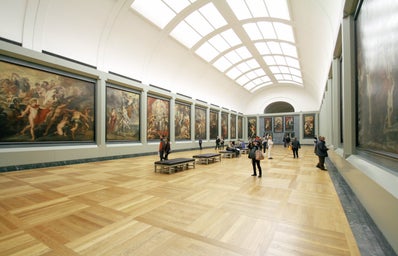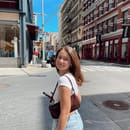Created in 1943, The Jungle by Wifredo Lam is filled with lengthy half-animal half-human figures. These figures are fragmented, appear to be wearing variations of African masks, and are surrounded by Cuba’s most profitable crop, sugarcane. The colors of the painting are mainly blue and green hues–giving the piece a sense of eerie mystery.
Although the piece itself is mesmerizing to look at, the cultural status and story of The Jungle are what truly qualifies the painting as art. Lam, born in Cuba, has a diverse background of Chinese, European, Indian, and African descent. In creating his masterpiece, Lam wanted to draw attention to Cuba’s unpleasant history of slavery and colonialism. The figures in the painting appear to almost be hiding within the sugarcane; Lam creates this effect in order to convey how African people who were forced to work in Cuba had to secretly meet in order to practice their native beliefs; Spanish and Portuguese traders forced Catholicism on them. Additionally, the style of the painting–although in line with the modernist movement of the time–pays homage to Afro-Cuban and African artistic traditions (MOMA 2020).
The cultural significance and overall meaning are what make this piece art to me. Lam purposely created this painting in order to tell not just any story but one of significance. He expresses the trials and tribulations of what it meant to be enslaved in a foreign land–constantly living in fear and under oppression. The emotional expression that is conveyed through Lam’s choice of color, placement, and figures makes The Jungle art. Art is regularly credited as something that is created through imagination. Even though I agree with this notion, I think the idea of art is a bit more complicated; real-life experiences combined with imagination become art. The combination of Cuban slavery and colonialism with Lam’s personal imagination makes The Jungle a true work of art. Lam’s The Jungle can be used in a broader sense to access the general categories that make something (whether that be an object, building, or thing) art. As I stated early, The Jungle is considered art because it expresses a real, raw, and emotional story. Lam is able to tell a story by using his imagination and creativity. All art should have these characteristics; art is an innovative way of storytelling. The reason art history is such a fascinating study is not because of the face value of art pieces but rather because of the stories behind the paintings, buildings, and sculptures we study.


